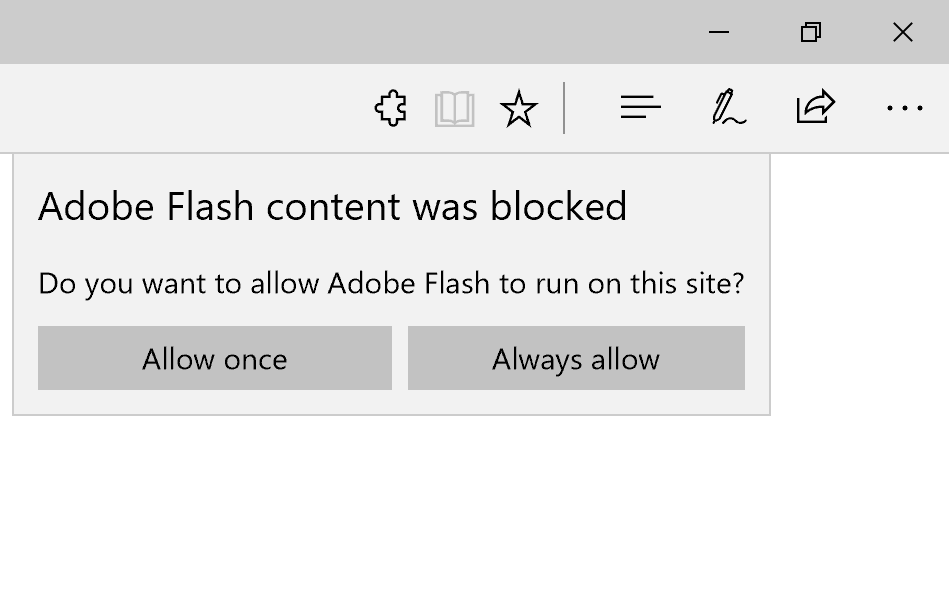In our next release, we will extend this functionality and encourage the transition to HTML5 alternatives by providing additional user control over when Flash content loads. Windows Insiders will be able to try an early implementation of this feature soon in upcoming preview builds. The user experience will evolve as we move towards a stable release in the Windows 10 Creator’s Update next year.
Sites that support HTML5 will default to a clean HTML5 experience. In these cases, Flash will not even be loaded, improving performance, battery life, and security. For sites that still depend on Flash, users will have the opportunity to decide whether they want Flash to load and run, and this preference can be remembered for subsequent visits.

We are deeply aware that Flash is an integral part of many web experiences today. To ease the transition to HTML5, these changes initially will not affect the most popular sites which rely on Flash today. In the coming months, we will actively monitor Flash consumption in Microsoft Edge and will gradually shorten the list of automatic exceptions. At the end of this process, users will remain in control, and will be able to choose Flash for any site they visit.
We advise web developers to migrate to standardized content delivery mechanisms like JavaScript and HTML5 Encrypted Media Extensions, Media Source Extensions, Canvas, Web Audio, and RTC in the coming months.
End user guidance
When you visit a website that attempts to load Flash content while browsing with Microsoft Edge in the Windows 10 Creators Update, you may notice that certain aspects of the website are not working the way you expect them to. This unexpected behavior may be a result Flash being blocked by default due to the Flash Click-to-Run feature.
When browsing to a site that requires Flash that may be blocked you will notice a puzzle piece icon on the right side of the address bar. Clicking on that icon gives you the options to allow Adobe Flash to run on that site once, or to have Microsoft Edge always enable Flash when visiting that site.

In some cases, the website you are visiting may detect that Flash is disabled and, rather than try to load their Flash content which causes us to show the puzzle piece, they may present you with a link or button to visit Adobe’s download page for Flash. Clicking on that link or button will cause the puzzle piece to appear in the address bar, allowing you to enable Flash for the page.

If the website you are visiting is trying to show you Flash content and you do not see the puzzle piece in the address bar please click the Ellipses, go to “Send Feedback” in the menu, then “Report site issue”, and write in the description that you believe this site is not working due to Flash Click-to-Run.
This change will provide all users improved performance, greater stability, and stronger security. These changes are similar to updates coming from our friends at Apple, Mozilla, and Google. We look forward to continued work with these partners, and with Adobe, to improve the capabilities and security of the web for all users.
― John Hazen, PM Manager, Microsoft Edge
― Crispin Cowan, Senior Program Manager, Microsoft Edge
